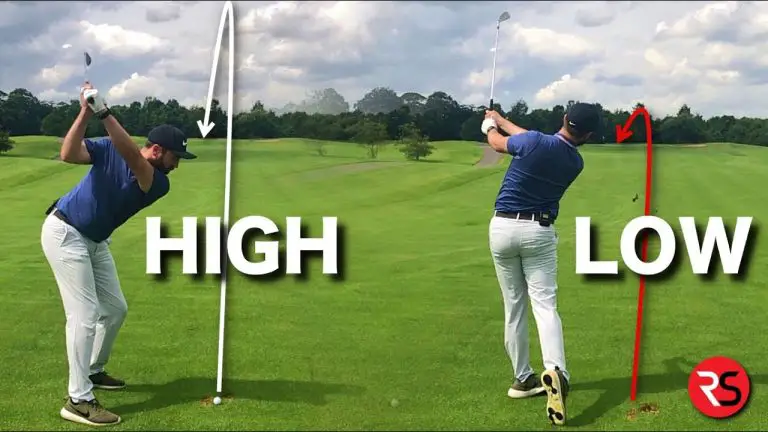How To Get Out Of A Golf Slump
Experiencing a golf slump can be a frustrating and discouraging period for any golfer. It’s that dreaded phase where every swing feels off, every shot misses the mark, and your confidence takes a nosedive. But fear not! You are not alone, and there are effective strategies and techniques to help you get out of a golf slump and rediscover your form and confidence on the course.
In this comprehensive guide, we will explore the various factors that contribute to a golf slump, the steps you can take to assess your game objectively, the mental approaches to regain confidence and focus, the reinforcement of fundamental skills, effective practice strategies, seeking professional guidance, and the importance of adjusting expectations and building resilience. By following these strategies and tips, you will be well-equipped to break free from the slump and rekindle your passion for the game.
Whether you’re a weekend warrior or a seasoned golfer, overcoming a slump requires patience, determination, and a positive mindset. So, grab your clubs, leave your frustrations behind, and let’s embark on a journey to reclaim your golfing excellence. It’s time to break out of that golf slump and unleash your true potential on the fairways and greens.

Understanding the Golf Slump Phenomenon
Golf slumps can be perplexing, affecting both amateur and professional golfers alike. Before diving into the strategies to overcome a slump, let’s explore the factors that may contribute to its onset.
What Causes a Golf Slump?
Golf slumps can stem from a combination of psychological factors, swing mechanics and technique issues, as well as external influences. Let’s examine each of these factors in detail:
Psychological Factors
Golf is as much a mental game as it is a physical one. Psychological factors that can contribute to a slump include:
- Confidence and Self-Belief: A loss of confidence or a negative self-image can impact your performance on the course.
- Pressure and Expectations: Feeling overwhelmed by expectations, whether self-imposed or external, can lead to added pressure and diminished performance.
- Mental Distractions: External distractions, personal issues, or lack of focus can affect your ability to stay present and perform at your best.
Swing Mechanics and Technique Issues
Changes or inconsistencies in your swing mechanics and technique can also contribute to a slump. These may include:
- Swing Flaws: Developments of swing flaws, such as a sudden slice, hook, or inconsistency in ball striking.
- Loss of Timing and Rhythm: Changes in your swing tempo or rhythm can result in mistimed shots and decreased accuracy.
- Lack of Fundamentals: Neglecting the fundamentals of grip, stance, and alignment can lead to inconsistency and poor ball striking.
External Factors Affecting Performance
External factors can have an impact on your performance, including:
- Course Conditions: Playing on challenging or unfamiliar courses, dealing with difficult weather conditions, or encountering unusual course setups can affect your confidence and shot-making.
- Equipment Issues: Equipment that is ill-fitted, worn out, or not suitable for your swing characteristics can impede your performance.
By understanding the potential causes of a golf slump, you can begin to address them and work towards regaining your form and confidence.
Assessing Your Game and Identifying Areas of Improvement
Before implementing strategies to break out of a slump, it’s essential to assess your game objectively and identify areas that require improvement. Let’s explore how you can evaluate your performance and gather valuable insights.
Seeking Objective Feedback
In addition to analyzing statistics, seeking objective feedback from knowledgeable sources can provide valuable insights into your game. Consider the following options:
- Technology for Swing Analysis: Utilize swing analysis tools such as video recording or swing analyzer apps to capture and review your swing mechanics. Compare your swings to those of professionals or seek online tutorials for guidance.
- Consulting with a Playing Partner or Golf Professional: Engage in discussions with a playing partner who is knowledgeable about the game or consult with a golf professional. They can observe your swing, offer feedback, and provide suggestions to help identify areas for improvement.
By analyzing your performance statistics and seeking objective feedback, you can gain a better understanding of your game’s strengths and weaknesses. This self-assessment will serve as a foundation for developing a targeted plan to break out of your golf slump.
Mental Approach: Regaining Confidence and Focus
The mental aspect of the game plays a significant role in overcoming a golf slump. Let’s explore strategies to regain confidence and focus on the course.
Analyzing Your Mindset
Your mindset on the course can greatly impact your performance. Take time to analyze your mental approach and identify any negative thought patterns that may be contributing to your slump. Consider the following:
- Negative Self-Talk: Notice any negative or self-critical thoughts that arise during your rounds. Challenge and replace them with positive and constructive self-talk.
- Self-Imposed Pressure and Expectations: Reflect on whether you are placing excessive pressure on yourself or setting unrealistic expectations. Adjusting your mindset to focus on the process rather than outcomes can alleviate unnecessary pressure.
- Mental Distractions: Be aware of external distractions or personal issues that may be affecting your focus on the course. Find strategies to clear your mind and stay present during each shot.
Developing a Positive Mental Routine
Creating a positive mental routine can help you establish a confident and focused mindset on the course. Incorporate the following practices into your pre-shot routine and overall approach:
- Visualization and Positive Self-Talk: Before each shot, visualize the desired outcome and engage in positive self-talk. Picture successful shots and reaffirm your abilities and strengths.
- Relaxation Techniques and Breathing Exercises: Implement relaxation techniques such as deep breathing or progressive muscle relaxation to manage stress and calm your mind before and during shots.
By analyzing your mindset, challenging negative thought patterns, and incorporating positive mental routines, you can rebuild your confidence and improve your focus on the golf course.
Reinforcing the Fundamentals
Strong fundamentals are the building blocks of a consistent golf game. When in a slump, it’s essential to revisit and reinforce the basic elements of your swing. Let’s explore two critical areas: grip and setup, and swing mechanics.
Revisiting Grip and Setup
The grip and setup are foundational to a solid golf swing. Even experienced golfers can develop bad habits or subtle inconsistencies over time. Revisit these fundamentals to ensure a strong foundation:
- Proper Grip Pressure and Hand Placement: Check your grip pressure and ensure your hands are positioned correctly on the club. Avoid excessive tension or grip pressure that can restrict your swing motion.
- Establishing a Solid and Balanced Stance: Review your stance and ensure that it provides a stable and balanced foundation. Pay attention to your alignment, foot placement, and posture, making adjustments as necessary.
Reviewing Swing Mechanics
Swing mechanics play a crucial role in generating power and consistency. Take the time to review and refine your swing mechanics, paying attention to the following aspects:
- Swing Plane and Path: Analyze your swing plane and path to ensure they are on the correct plane and aligned with your target. Strive for a consistent and repeatable swing path for improved ball striking.
- Checking Alignment and Weight Distribution: Verify that your body alignment and weight distribution are aligned with your target and the desired shot shape. Adjustments to your alignment and weight distribution can greatly impact your swing consistency and accuracy.
By reinforcing the fundamentals of grip and setup, and refining your swing mechanics, you lay a solid foundation for improving your performance and breaking out of a slump.
Practicing with Purpose and Focus
Effective practice is essential for overcoming a golf slump. However, not all practice is created equal. Let’s explore strategies for practicing with purpose and focus to maximize your improvement.
Structuring Practice Sessions
To make the most of your practice sessions, it’s crucial to have a structured approach. Consider the following when planning your practice sessions:
- Setting Specific Goals for Each Practice Session: Identify areas of your game that require improvement and set specific goals for each practice session. For example, you may focus on iron accuracy or lag putting.
- Allocating Time for Different Aspects of the Game: Divide your practice time to address various elements of your game, including the long game, short game, and putting. Allocate more time to areas that require additional attention.
- Varying Practice Drills and Exercises: Incorporate a variety of drills and exercises that target specific skills or problem areas in your game. This variety keeps practice sessions engaging and helps simulate real-life golf situations.
Incorporating Targeted Drills and Exercises
Practicing with purpose involves incorporating targeted drills and exercises to address specific areas of improvement. Consider the following drill examples:
- Alignment and Target Practice: Set up alignment sticks or markers on the range and practice aligning your shots to specific targets. This drill improves accuracy and alignment consistency.
- Tempo and Rhythm Training: Utilize a metronome or practice swinging with a specific rhythm to develop a consistent tempo in your swing. This drill promotes better timing and synchronization.
- Short Game Challenges: Create simulated on-course scenarios for your short game, such as hitting shots from different lies or practicing specific types of chip shots. These challenges help improve your creativity, decision-making, and execution around the greens.
By structuring your practice sessions and incorporating targeted drills and exercises, you can focus your efforts on areas that need improvement and maximize your progress towards breaking out of a slump.
Seeking Professional Guidance
Sometimes, breaking out of a golf slump requires the expertise and guidance of a golf professional. Let’s explore how professional instruction can help you overcome your slump.
Consulting with a Golf Instructor
A qualified golf instructor can provide valuable insights and guidance tailored to your specific needs. Consider the following benefits of consulting with a golf instructor:
- Identifying and Correcting Swing Flaws: A golf instructor can analyze your swing mechanics, identify any flaws or inconsistencies, and provide specific drills and exercises to address them.
- Receiving Personalized Instruction and Feedback: Working with a golf instructor allows you to receive personalized instruction and immediate feedback, ensuring that you make the necessary adjustments and improvements to your game.
Mental Coaching and Sports Psychology
In addition to swing instruction, mental coaching and sports psychology can play a significant role in overcoming a slump. Consider the following benefits of seeking mental coaching:
Working with a sports psychologist or mental coach can help you address the psychological factors contributing to your slump. They can provide strategies and techniques to improve your mental approach, manage pressure, and maintain focus during rounds. Mental coaching can help you develop resilience, confidence, and a strong mindset on the course.
By seeking professional guidance, whether it be from a golf instructor or a mental coach, you gain access to expertise and personalized instruction that can accelerate your progress in overcoming a golf slump.
Adjusting Expectations and Embracing the Process
During a golf slump, it’s crucial to adjust your expectations and embrace the process of improvement. Let’s explore strategies to help you stay motivated and positive throughout your journey.
Setting Realistic Goals
Instead of solely focusing on immediate results, set realistic goals that focus on improvement and progress. Consider the following tips for goal setting:
- Break Down Larger Goals: Divide your larger goals into smaller, manageable steps. This allows you to track your progress more effectively and experience small victories along the way.
- Focus on Process Goals: Emphasize goals that are within your control, such as practicing a certain number of hours per week or completing specific drills consistently. Process goals help you stay motivated and focused on the daily habits that lead to improvement.
Enjoying the Game and Embracing Challenges
Golf is a challenging and rewarding game, and it’s essential to maintain a sense of enjoyment and embrace the challenges it presents. Consider the following:
- Embrace the Learning Opportunities: View your slump as an opportunity for growth and learning. Every challenge presents an opportunity to improve and develop resilience.
- Find Balance: Remember to enjoy the game beyond just the outcomes. Appreciate the beauty of the golf course, the camaraderie with fellow golfers, and the joy of hitting good shots.
By adjusting your expectations, setting realistic goals, and finding enjoyment in the game, you can maintain a positive mindset and stay motivated throughout your journey of breaking out of a golf slump.
Building Resilience and Mental Toughness
Building resilience and mental toughness are essential components of overcoming a golf slump. Let’s explore strategies to help you develop these qualities.
Developing a Growth Mindset
Adopting a growth mindset allows you to view setbacks as opportunities for growth and learning. Consider the following mindset shifts:
- Embrace Challenges: Embrace the challenges and setbacks you face on the course. See them as opportunities to develop new skills and become a better golfer.
- Learn from Setbacks: Rather than dwelling on poor shots or rounds, focus on extracting lessons from them. Analyze what went wrong, and use that information to make adjustments and improvements.
Staying Committed and Consistent
Consistency and commitment to your practice and improvement are key to overcoming a slump. Consider the following strategies:
- Maintain a Regular Practice Routine: Establish a consistent practice routine that aligns with your goals and commitments. Regular practice helps reinforce positive habits and builds confidence.
- Continue to Play and Compete: Don’t shy away from playing rounds or participating in competitions during your slump. Embrace the challenge and use it as an opportunity to put your practice into action and learn from the experience.
By developing a growth mindset, staying committed to your practice routine, and continuing to play and compete, you build resilience and mental toughness that will support your journey of overcoming a golf slump.
Conclusion
Experiencing a golf slump is a common challenge that golfers face at some point in their journey. However, by understanding the factors that contribute to a slump and implementing the strategies outlined in this guide, you can break free from the slump and regain your form and confidence on the golf course. Remember to assess your game objectively, work on your mental approach, reinforce the fundamentals, practice with purpose, seek professional guidance when needed, adjust your expectations, and build resilience. With dedication, perseverance, and a positive mindset, you can overcome your golf slump and enjoy the game to its fullest.
Keep in mind that breaking out of a slump takes time and patience. It’s important not to get discouraged and to celebrate small victories and progress along the way. Stay committed to the process of improvement and focus on the joy of playing the game.
So, the next time you find yourself in a golf slump, remember that it is a temporary phase that can be overcome. Implement the strategies and techniques discussed in this guide, and with persistence and a positive mindset, you will regain your form and confidence on the golf course.
Embrace the challenge, enjoy the journey, and get ready to elevate your golf game to new heights. Here’s to breaking out of your golf slump and experiencing the satisfaction of reaching your full golfing potential!






